A high definition macro lens.
Choices:
After the 50mm f/2 Nikkor, this is quite possibly one of the commonest Nikon lenses ever made. The 55mm f/3.5 Micro Nikkor is abundantly available in many variants:
- Metal focus barrel, compensating aperture, pre-Ai
- Metal focus barrel, non-compensating aperture, pre-Ai
- Rubber focus barrel, pre-Ai
- Rubber focus barrel, Ai
- Rubber focus barrel, Ai, multi-coated
The later 55mm f/2.8 Ai-S MF optic is not recommended, owing to widespread reports of oil migrating from the focus mechanism to the aperture blades. Overhauling the lens to replace lubricants makes no economic sense owing to the high cost of labor. The even later 60mm f/2.8 versions, all AF, have the benefit of extending the focus range to life-size without the need to use an extension tube. But the construction quality of the 55mm f/3.5 was never equalled.
Ai conversion:
Spare no thought of destroying ‘collectible value’ by doing the Ai conversion. First, collectors are scum who serve only to drive up used gear costs. People who put gear in storage – be it camera or Ferrari – are beyond contempt in my book. Second, Nikon made hundreds of thousands of these lenses and you can always find any version in any condition on the used market, at very short notice. There is no such thing as a ‘collectible’ 55mm Micro Nikkor.
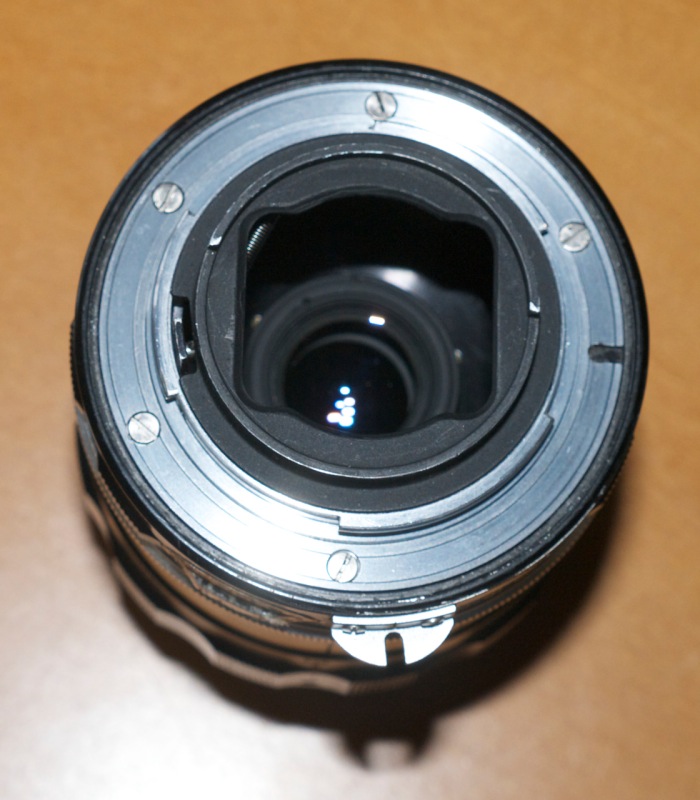
The rear of the lens is exceptionally well baffled.
This means that the usual work will have to be done to file away an arc of alloy to permit clearance of and proper engagement with the aperture follower on the Nikon’s body. Not doing this will damage your camera. This work has yet to be done in the above illustration.
The snag is that the aperture collar where the filing has to be done cannot be removed by simply removing the bayonet flange – the five slotted screws shown. No, removing the small radial aperture ring indexing screw does not help. Don’t bother trying. So to work around this, after removing the bayonet flange, I placed some heavy-duty tape over the rear of the lens and scribed around carefully with a sharp knife to produce a thoroughly sealed interior which resisted any ingress of metal filings.
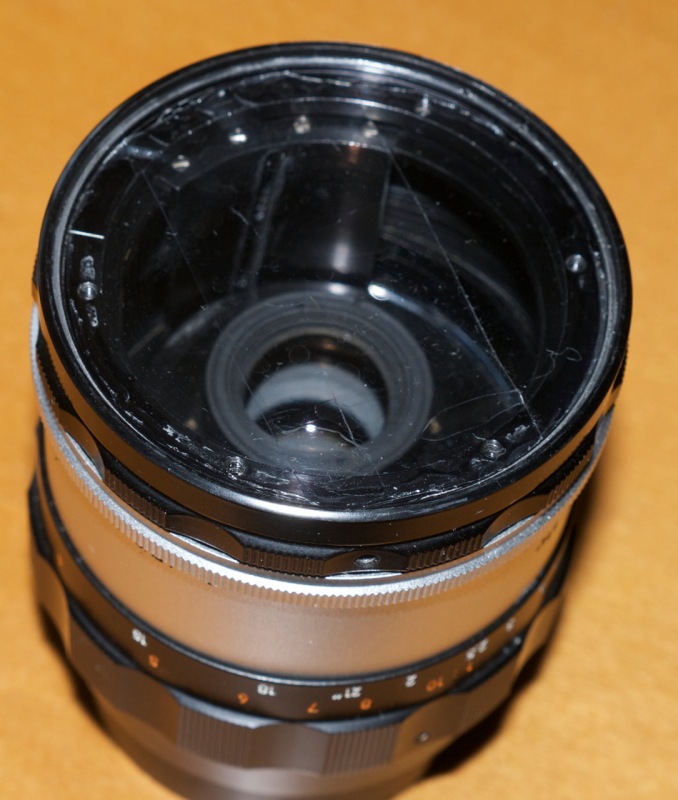
With the bayonet flange removed, 3M clear Scotch tape is placed in position, ready for filing.
Be sure to keep the lens focused at its closest distance – the protruding rear element will otherwise contact the adhesive tape, a move not calculated to enhance definition. Filing can now proceed in the usual way, using my guide here. All filings are blasted away with compressed air after which the Scotch tape can be discarded and the bayonet flange replaced.
CPU installation is as easy as it gets. No changes are needed, the CPU simply being glued in place in the usual way as I indicate here.
In use:
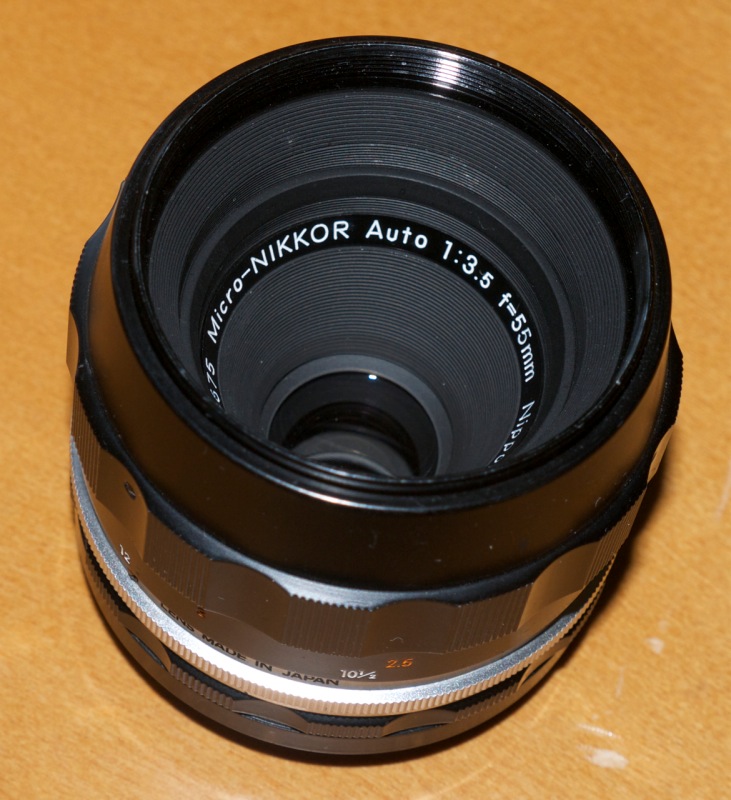
Deeply recessed front element.
The front element of the Micro Nikkor is deeply recessed within the barrel, so it’s unlikely that adding a lens hood will make any difference to results. Some reports indicate that the Micro Nikkor has poor performance at infinity, only really coming into its own at 1:10 and greater reproduction ratios. I have no idea where these urban myths were perpetrated – perhaps the results of a bad sample or two? – but mine is tack sharp at all apertures and subject distances, with optimum resolution being at f/5.6 through f/11 in the center and f/8 through f/11 in the extreme corners. Minor diffraction resolution losses become apparent at f/16 and f/22, and by f/32 these are noticeable, so I would avoid using the smallest aperture.
I do not recommend using a protective UV filter. It will serve only to attract light reflections, especially as it will be situated a considerable distance from the front element.
The lens is very light and the focusing helicoid exceptionally well designed, so that there is no play in the barrel even with the lens fully extended at its closest focus distance.
f/3.5 is not especially fast so how is focusing? I use the focus confirmation display in the D3x and hitting the illuminated central LED is very sensitive, meaning focus is very accurate. The infinity setting is exceptional, as the combination of 55mm Micro Nikkor and D3x body can easily distinguish between 250 feet and infinity. For reference, the same focus module is used in the D700, D3 and D3s bodies. So even at close focus distances, getting critical focus is trivial, though a tripod is strongly recommended in the close-up range where even minor movement of the camera can significantly upset focus.
Lens correction profile:
The lens is pretty close to perfect as is. There is very minor vignetting at f/3.5, and very low barrel distortion at all apertures. Chromatic aberration is almost non-existent. Nonetheless, I have made a lens correction profile which you can download here. This corrects these very minor aberrations, and if you add a CPU then you can have this profile automatically invoked and applied in Lightroom or Photoshop when downloading images from your camera’s storage card.
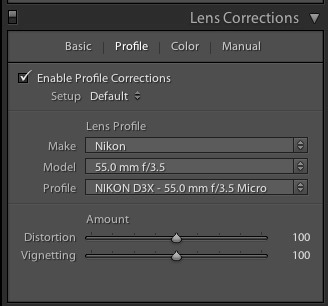
A CPU allows the correct profile to be automatically
loaded in Lightroom and Photoshop.
Comparison with the 50mm f/1.4 Nikkor:
The 50mm f/1.4 Nikkor of the same era is a firm favorite of mine and both optics are absolute classics from the period when Nikon’s mechanical and optical designs peaked. It’s hard to put in words the tactile pleasure of using these lenses. How do they compare? At f/3.5, f/5.6 and f/8 the Micro Nikkor has the edge in errr…. edge performance, but you would need to make a 40″ print to prove it. The 50mm of course opens up to F/1.4 and the Micro Nikkor goes down to 50% life-size, so it’s horses for courses. Neither will let you down.
The following images are of a 27x enlargement of the top right corner of the frame:
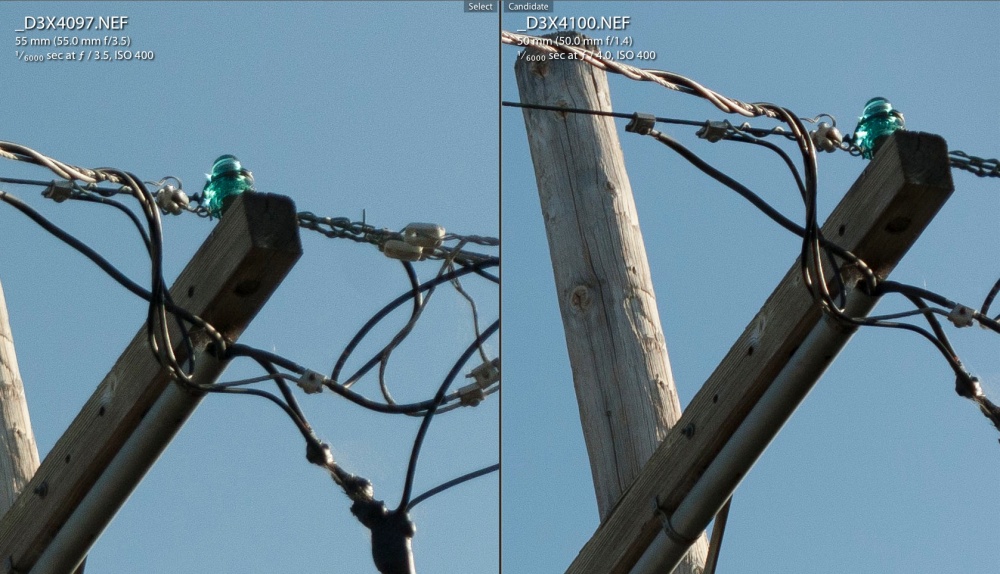
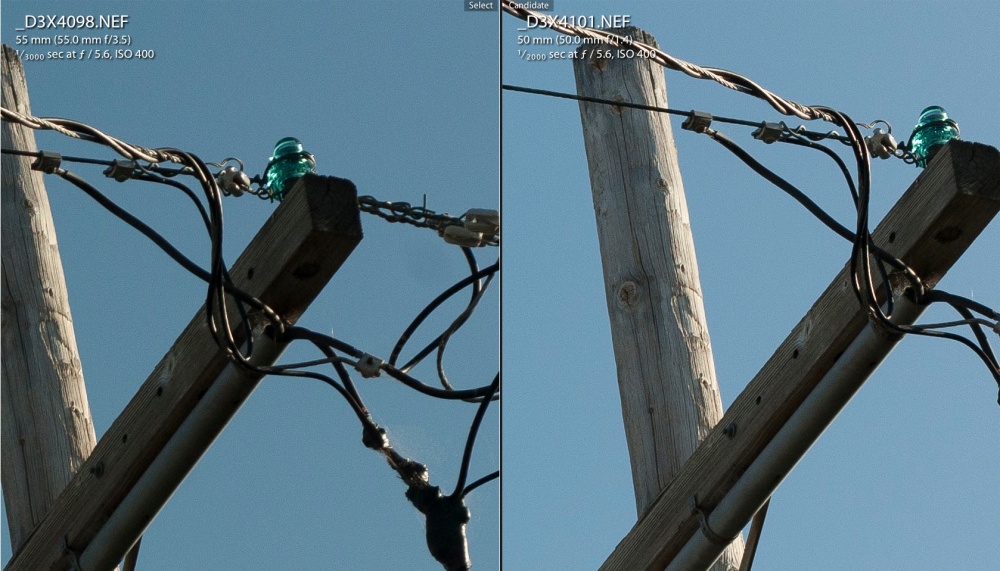
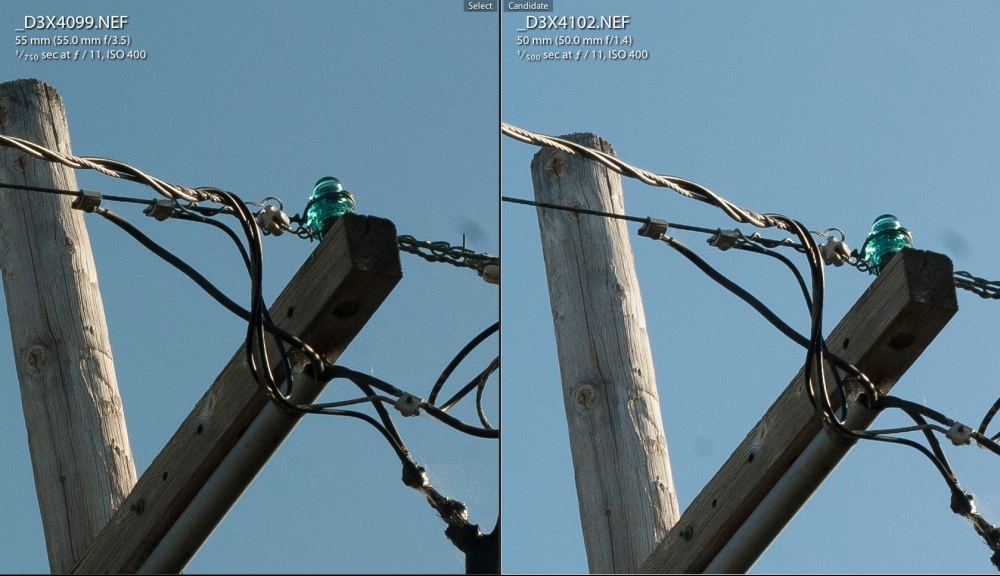
At 1:2 closest focus distance:
This image of a wristwatch was exposed at f/3.5, full aperture, at the closest focus distance:

Helicon Focus focus stacking of 14 images.
The 14 differentially focused images and the Helicon composite.
This gives you a sense of the maximum image size at the 1:2 closest focus distance. The image was created using Helicon Focus focus stacking software, and is a composite of no fewer than 14 differentially focused images, all taken at f/3.5. Because it takes a few seconds to take all the constituent images, refocusing a bit between each, I have removed the blur of the seconds hand using Photoshop.
The 55mm Micro Nikkor is recommended without reservation and at current market prices it’s almost offensively inexpensive.